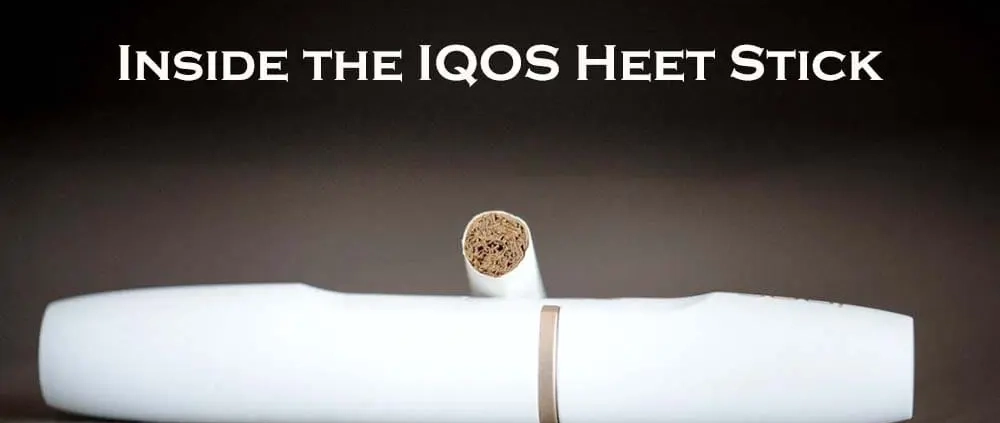The truth of IQOS composition
The global heated tobacco products market is growing at a CAGR of 8.5% during the forecast period (2023-2030).
Cigarettes were the main tobacco products in the 20th century.
Things have changed in recent years.
Alternative tobacco products,
such as electronic cigarettes (e-cigarettes) and heated tobacco devices like IQOS, have gained popularity.

IQOS & a Cigarette
Fewer and fewer young people prefer cigarettes and are switching to systems for heating tobacco.
The most popular HTP brand is IQOS.
In 2021, PMI’s IQOS had a 71.5% market share for HTP sticks (by volume).
As of February 2020, PMI reported that 14 million people used IQOS. Of those, 10 million had stopped smoking and switched to IQOS, while 4 million were still smoking cigarettes.
Now, in 2023, I am sure that over these few years, the number of IQOS smokers has way increased.
Many people smoke IQOS but still don’t know what their sticks are actually made of.
In this article, I want to share information with you and tell the truth.
What is the design of HEETS sticks and what do they consist of?
IQOS sticks, also known as HEETS or HeatSticks, are specifically designed for use with IQOS, a tobacco heating system produced by Philip Morris International.
These sticks are intended to be used with the IQOS device, which heats rather than burns tobacco.
The composition of IQOS sticks is different from traditional cigarettes.

iqos heet stick
Visually, the stick can be divided into two parts – a filter and a tobacco “capsule”.
But the design is a little more complicated. After the segment is filled with tobacco, there is a characteristic air chamber with empty space. It is needed so that the smoker inhales cooled, not hot smoke (steam).
Next is the cooling plug.
According to the manufacturer, it promotes more thorough cooling, humidification, and softening of tobacco vapor passing through the acetate material.
By the way, the filter is made of the same material as in cigarettes. It just doesn’t take up much space – a little more than half a centimeter.
What kind of plastic film is used in Heet sticks for IQOS? Why is it needed?

IQOS HEETS STICKS
Many people regard this film as plastic.
In fact, it is a completely safe biopolymer material obtained from corn starch and lactic acid.
This film is needed for optimal control of the humidity and temperature of the inhaled smoke (steam practically).
What is in HEETS sticks for IQOS – tobacco or its substitute?

Reconstituted tobacco sheet
Neither, I’d say.
The tobacco in the form of a reconstituted tobacco sheet, is specially designed for use with the heating system.
The technology of its processing and preparation is completely different from that of cigarettes.
Here are the specific steps:
- Tobacco Grinding: Tobacco leaves are ground into fine particles or “dust.” This can include not only processed tobacco leaves but also waste or by-products from tobacco production.
- Addition of Glycerin and Propylene Glycol: The resulting tobacco dust is mixed with glycerin and propylene glycol. These substances are commonly used as humectants and are added to create a moist, pliable, and uniform consistency. The goal is to prevent the tobacco from burning but rather heating up and producing an aerosol or vapor when in contact with a heating element.
- Formation of Tobacco “Paper”: The moist, mixed tobacco is then formed into a thin, solid sheet. This can involve pressing the material into a sheet-like form. The addition of glycerin and propylene glycol helps create a flexible and cohesive “tobacco paper” that can be handled during subsequent processing.
- Cutting and Shaping: The formed tobacco sheet is cut into the desired size and shape. This can involve using special machines to ensure precision.
- Filling the Stick: The cut tobacco sheet is then used to fill the stick, which is the consumable portion of the tobacco product. The stick is the component that users insert into a heated tobacco device for consumption.
- Heating Process: When the stick is heated in a device like IQOS, the goal is not to burn the tobacco but to heat it to a point where it produces an aerosol containing nicotine and flavor compounds. This process is often referred to as “heat-not-burn.”

Different from cigarette tobacco
What’s more, you can also find cigarette paper which wraps the stick.
It is different from traditional filter cigarette paper because HTP doesn’t burn.

inside-iqos-tobacco-heet-stick
In brief, the main components of HEETS typically include:
| Component | Description |
| Tobacco | Processed tobacco in the form of a reconstituted tobacco sheet. |
| Filter | Contains various materials to enhance the overall experience and filter out some harmful substances. |
| Paper | Outer wrapper designed to withstand high temperatures during the heating process. |
| Cellulose Acetate | Common material used in cigarette filters, likely present in the filter section of HEETS. |
And a related article:


 © cigpaper.com
© cigpaper.com
 "Open Bible" by Ryk Neethling is licensed under CC BY 2.0.
"Open Bible" by Ryk Neethling is licensed under CC BY 2.0.





